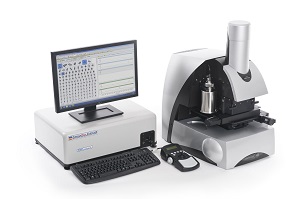The application of morphologically directed Raman spectroscopy to characterizing the component-specific particulate properties of the active components in a topical pharmaceutical cream is described in an application note from Malvern Panalytical.
 The Morphologi G3-ID allows component specific characterization of distributions within a pharmaceutical blend.
The Morphologi G3-ID allows component specific characterization of distributions within a pharmaceutical blend.
While it is relatively straightforward to determine the particle size distributions of the individual components of a drug formulation before they are formulated as a blend, doing so post-blending is more challenging. Now, the Morphologi G3-ID, which combines automated image analysis with Raman spectroscopy in a single instrument, enables component-specific particle size and shape distributions to be obtained from a blend. The results of this analysis can provide information about the homogeneity and potency of individual components.
Such insight is helpful in improving product understanding and can be applied from a regulatory perspective right through to troubleshooting and optimizing manufacturing processes.
‘Component specific particle characterization of active component(s) in topical cream products’ is freely downloadable from the Malvern Panalytical website. It details the analysis of a commercially available topical cream containing two active ingredients.
These two morphologically similar actives could not be differentiated by image analysis alone, however the combination of image analysis with Raman spectroscopy allowed the unambiguous determination of particle size distribution for each component.
The Morphologi G3-ID provides size, shape and chemical analysis information for particles in the size range 0.5 µm – 1000 µm for a variety of sample types, including dry powders, liquids and creams. It operates by scanning a particle dispersion and using advanced optics to capture images of individual particles.
The system then automatically selects particles within the dispersion and collects a Raman spectrum from each one, allowing them to be classified and grouped in terms of discrete component populations. Designed for operational ease of use, the fully automated instrument enables particle characterization scientists with even limited spectroscopic experience to gain an in-depth understanding of their particulate samples.